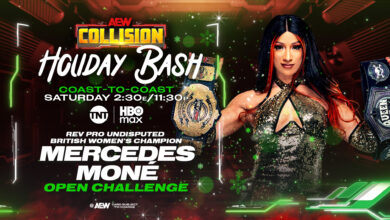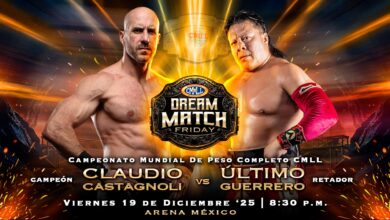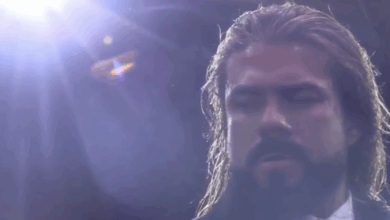Mike Bailey Says There’s No Such Thing As A’ Bad Match’ If The Crowd Loves It
Mike Bailey discusses the subjective nature of what makes a “good” professional wrestler and the importance of tailoring one’s performance to specific audiences.
Professional wrestling, like movies, music, or video games, is a subjective form of entertainment. While many people agree that Bret Hart is one of the best professional wrestlers of all time, some prefer Orange Cassidy’s unique blend of comedy and fast-paced action. Mike Bailey is someone who knows how to balance humor and great action, and he is now discussing how performing in front of different audiences helps him understand the subjective nature of “good” wrestling.
Bailey told Fightful’s Sean Ross Sapp in a new interview that wrestling for the DDT promotion in Japan was where he first began to understand the importance of tailoring matches to a target audience.
“All art is subjective, and professional wrestling is an art form. But I learned when I wrestled in DDT, the difference between objective and subjective—being an objectively good professional wrestler and a subjectively good professional wrestler, there is always a goal, there’s always a target audience, there’s always a paying audience,” he said. “There are many wrestlers who are, again, only good at doing one thing. They’re over in their hometown. They’re good at doing one job. But in DDT, oftentimes, we had to do matches on blue gym mats in the middle of a shopping mall for maybe there were 10 DDT fans there, but mostly there were people walking around who did not expect or want to see professional wrestling.
“You still had to entertain these people,” he continued. “You had to give them a good show. With no knowledge, you had to make these people go, ‘What are these guys doing? It’s awesome.’ You can say that you didn’t enjoy any professional wrestling match, and that’s fine. But to say that any match or wrestler is bad, when you can see them, entertain the audience who pays to see them, and see that audience grow week by week, you are just wrong. I think there is such a thing as objectively good professional wrestling, and you can look at every match as—was it objectively successful? Then you can not like that, and that’s fine. But if it was objectively successful, then you have no room to complain.”
Bailey also quickly commented on the double standard that some apply when discussing professional wrestling and the way certain moves were once protected.
“Okay, so here’s again, just exploding the minds of old heads from the nineties, right? Stan Hansen’s finisher was a clothesline. A lariat used to be a finish, and the same people that are like, ‘Oh, protect these moves or else they won’t be believable as finishers,’ are the same group of people who preach a bump and feed clothesline comeback as an absolute… You’re going to get me in trouble. You’re going to some kind of pro wrestling watch list here.”
While some compare different styles of wrestling to various flavors of ice cream, Mike Bailey doesn’t agree with that comparison. Because, while preferences are subjective for a modern audience choosing what wrestling to watch, wrestlers must adapt what they do in the ring to the paying crowd, which can vary greatly depending on where they are wrestling on any given night.
“One thing that is often said that I consistently disagree with is the whole flavors of ice cream discussion. Which I’m sure is an analogy you’ve heard. There’s different kinds of wrestling. There’s different kinds of flavors of ice cream,” he began. “But also, I think that pro wrestlers respond to the audience. Most styles are catered to the audience. Like the wrestling you see in Mexico versus the wrestling you see in Japan is not a coincidence. It’s not genre. It’s style. It’s what the audience demands.
“The way wrestling is consumed in Japan, people get super absorbed into the stories,” he continued. “They know and love the performers, know every detail about their lives, get fully involved. In Japan, if you tease a move for 10 shows and then hit it on the 11th, you’ll get a big reaction because the audience will have followed along. In Mexico, it’s the complete opposite. People go to see the show because it’s fun. Because, ‘Lucha Libre is in town, hey, let’s go, let’s enjoy.’ It’s a party. People drink, people have fun. People are not watching for intricate storylines. People are watching for cool stunts.
“That’s why you get a lot of guys who do cool stunts in very colorful outfits. American wrestling remains somewhere in between and I think people do a terrible job in general at figuring out where they are. I think that’s where we get into a longer and more complex discussion about storylines in independent wrestling and how difficult it is to run a promotion once a month and have your audience be able to understand and follow along with stories that are only accessible on the internet when most people are just there to see the wrestling and have a good time.”
Mike Bailey shares more of his wrestling philosophy in the new Keep It Kayfabe documentary, which premiered worldwide at San Diego Comic Con. For more details on the film, check out an interview with the documentary’s directors, Christian O’Keefe and Michael Priestley, now available on Fightful Select.




